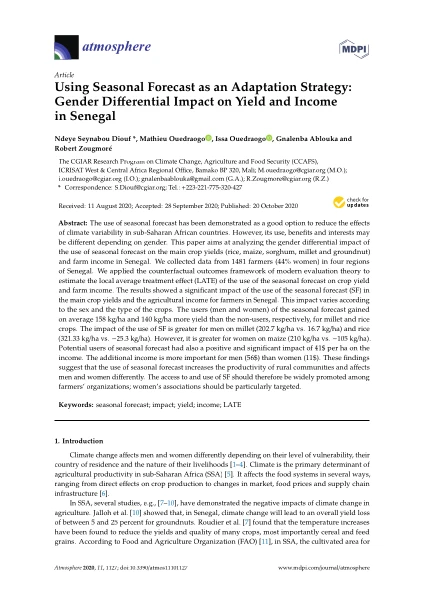Using Seasonal Forecast as an Adaptation Strategy: Gender Differential Impact on Yield and Income in Senegal
Abstract
The use of seasonal forecast has been demonstrated as a good option to reduce the effects of climate variability in sub-Saharan African countries. However, its use, benefits and interests may be different depending on gender. This paper aims at analyzing the gender differential impact of the use of seasonal forecast on the main crop yields (rice, maize, sorghum, millet and groundnut) and farm income in Senegal. We collected data from 1481 farmers (44% women) in four regions of Senegal. We applied the counterfactual outcomes framework of modern evaluation theory to estimate the local average treatment effect (LATE) of the use of the seasonal forecast on crop yield and farm income. The results showed a significant impact of the use of the seasonal forecast (SF) in the main crop yields and the agricultural income for farmers in Senegal. This impact varies according to the sex and the type of the crops. The users (men and women) of the seasonal forecast gained on average 158 kg/ha and 140 kg/ha more yield than the non-users, respectively, for millet and rice crops. The impact of the use of SF is greater for men on millet (202.7 kg/ha vs. 16.7 kg/ha) and rice (321.33 kg/ha vs. −25.3 kg/ha). However, it is greater for women on maize (210 kg/ha vs. −105 kg/ha). Potential users of seasonal forecast had also a positive and significant impact of 41$ per ha on the income. The additional income is more important for men (56$) than women (11$). These findings suggest that the use of seasonal forecast increases the productivity of rural communities and affects men and women differently. The access to and use of SF should therefore be widely promoted among farmers’ organizations; women’s associations should be particularly targeted.

